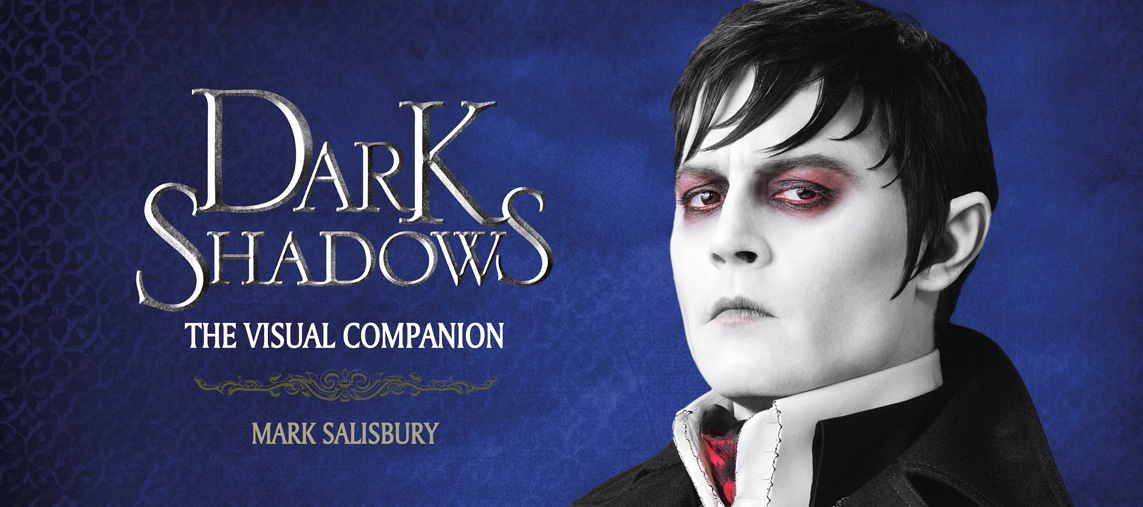Book Review – Dark Shadows: The Visual Companion
Posted 8 years ago by Rob Lammle Books

The cult TV show Dark Shadows ran from 1966 until 1971. I wasn’t even born when the odd, supernatural soap opera went off the air, so it wasn’t something I was familiar with until a few years ago when Tim Burton talked about doing a movie based on the show. Frankly, the movie never really interested me since I had no connection whatsoever to the property, until I saw the first trailer. It would have been easy for Burton to set the movie in the modern age, but, no, he had to go retro with a 1970s period piece. And that alone interested me. Not enough to see it in the theatre, mind you, but enough to spend $1 at one of the 3,000 Redbox machines within two blocks of my house.
Going into the movie blind, with only the vaguest notion of what the central premise was, I can’t say that my “intrigued” attitude grew to become affection. I didn’t care about any of the characters, the comedy mostly fell flat for me, and the plot was less than inspiring. Yet I felt compelled to finish the movie, just because it was such a bold experiment in movie-making, mostly due to the set and costume design.
When I had the opportunity to check out Dark Shadows: The Visual Companion from Titan Books, I agreed, because I knew the book would cover many of the aspects I found so interesting: the visuals. And it does cover a lot of the early production designs and special effects and all that great behind-the-scenes stuff you’d expect. But I was also impressed by how much of the book is filled with interviews from the cast and crew, who talk at length about their inspiration for a scene, a character, or a particular set design. Normally these “making of” books will feature a foreward by the director and then the rest is filled with comments from such “vital” members of the film as the Assistant to the Assistant Director of the Second Unit. But here, Depp, Burton, and all the rest of the cast and major crew members are quoted on nearly every page, revealing their passion for the project, which was really refreshing. Because even if a movie isn’t your cup of tea, it’s nice to know that the people involved really put their heart into it, rather than just showed up on set and collected a paycheck.
As with any Burton pic, seeing his spindly, spastic sketches is one of the highlights of the “making of” materials, and the Visual Companion does not disappoint. Although he didn’t design the look of every character, the drawings of Barnabus, the patriarchal vampire, and some of his other family members, is pure Burton, through and through. It could be argued that his art style and vision are a little played out and too-familiar at this point, but if you’re a Burton fan, you’ll appreciate his take on the Dark Shadows personalities and world.
But where the book really shines is in the production design department. Seeing how much care and forethought went into the movie’s visual only reinforced why I was so impressed by that aspect of the production. It’s great to see the minute details that were considered when making models of the town of Collinsport, how the early-1970s aesthetic is conveyed in everything from clothing to signage to hairstyles, and how it integrates with the 1770s architecture of the Collins’ mansion. Recreating these eras was clearly a labor of love and it pays off in the final film.
The rest of the book is pretty standard fare for what is essentially a hardbound, nicely-produced presskit: shots of actors against green screens, half-built sets with the rest constructed by CGI in post-production, and photos of people working diligently in an editing bay or the orchestra pit. If you’re a fan of the movie, you’ll love seeing candid shots like Depp and Bonham Carter mugging for the camera, hearing about what it was like having Alice Cooper on-set for his cameo, and other tales and images from the production. If the movie didn’t grab you, your interest in these aspects of the book will vary.

The wonders of CGI create a bustling train platform out of thin air
In the end, that’s really what Dark Shadows the movie, the TV show, and this book are all about: cult-dom. If you don’t have any attachment to Dark Shadows in any of its various forms, the book probably won’t hold much interest for you. That’s not to say it’s poorly produced – in fact, it’s quite nice for these types of “making of” materials – it’s just that it’s made for a very specific audience. And if you’re a part of that audience – and you’ll know if you are or not after seeing the movie – then the Dark Shadows: Visual Companion is right up your alley.
Dark Shadows: The Visual Companion is available on Amazon.com, BN.com, and other fine booksellers.


